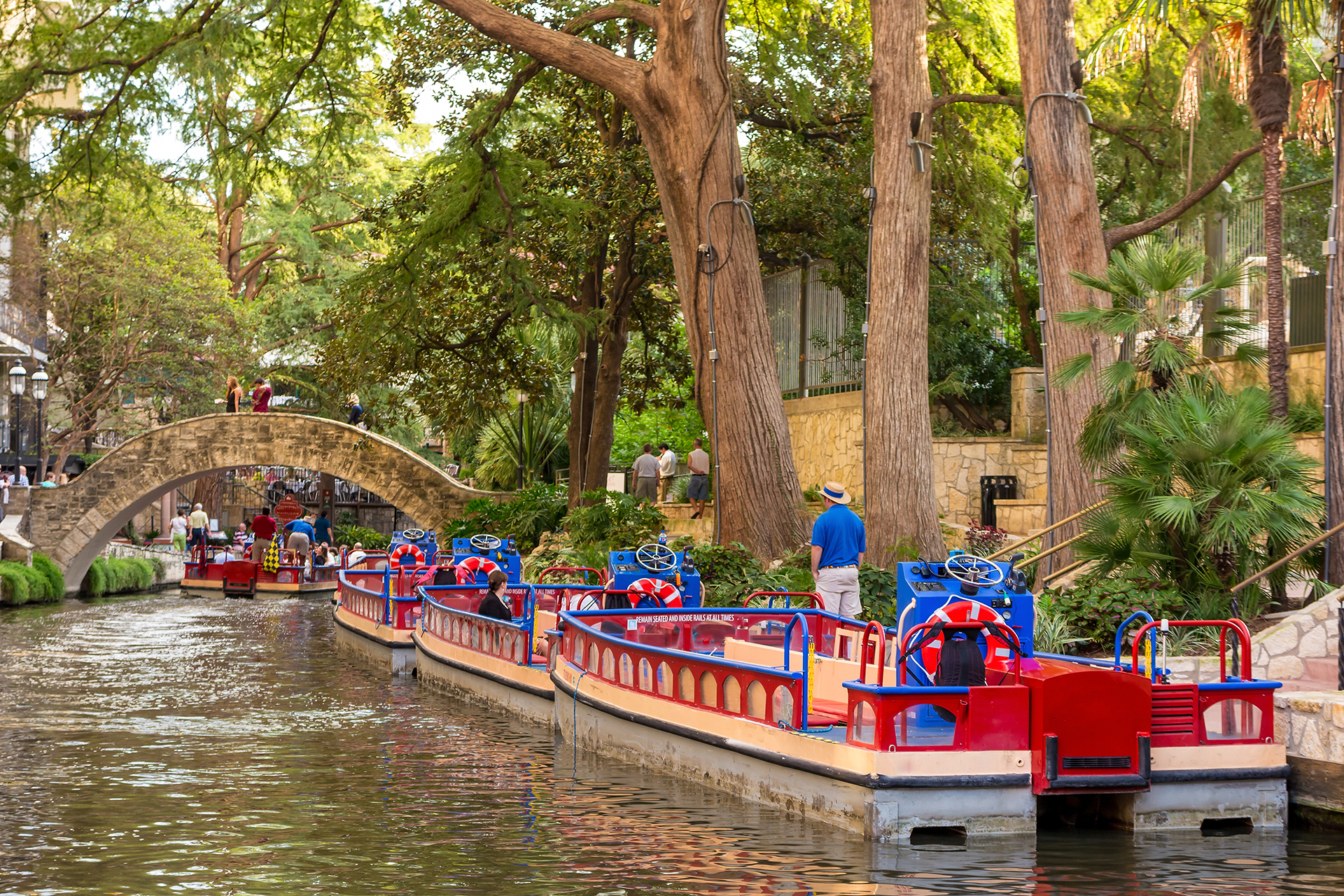US Senior Tours offer a vibrant market catering to the growing population of active retirees seeking enriching travel experiences. This guide delves into the diverse offerings, from escorted group journeys to independent explorations, highlighting the key factors seniors consider when planning their adventures. We’ll examine pricing structures, amenities, and essential considerations for health and safety, ensuring a smooth and memorable trip.
From breathtaking national park itineraries to historical city explorations and relaxing cruises, the options are extensive. Understanding the nuances of different tour types, operators, and potential challenges is crucial for planning a successful and fulfilling senior travel experience. This comprehensive overview aims to equip prospective travelers with the knowledge they need to make informed decisions and embark on their dream adventure.
Understanding the “US Senior Tour” Market
The US senior tour market is a significant and growing segment of the travel industry, catering to the increasing number of active and adventurous retirees seeking enriching travel experiences. Understanding the demographics, motivations, and diverse offerings within this market is crucial for both tour operators and potential participants.
Demographics of US Senior Tour Participants
The typical US senior tour participant is generally aged 65 and older, though the range can extend to 80 and beyond. This demographic is increasingly active, financially secure (often with retirement savings and pensions), and possesses a strong desire to explore new places and cultures. While there is a significant portion of couples participating, solo travelers are also a considerable segment, particularly among women.
Educational attainment levels are generally high, reflecting a desire for enriching and intellectually stimulating experiences. Geographic origin varies widely, reflecting the diverse population of the United States.
Motivations for Senior Tour Participation
Several key motivations drive seniors to participate in organized tours. The convenience and ease of pre-arranged travel arrangements, including flights, accommodation, and transportation, are significant factors. Many seniors appreciate the structured itineraries that alleviate the stress of planning and logistics. The social aspect of group travel, creating new friendships and shared experiences, is also a major draw.
Furthermore, many tours offer access to unique experiences and destinations that might be challenging or impractical to arrange independently. The opportunity for educational enrichment and cultural immersion also appeals to a significant number of senior travelers.
Types of US Senior Tours
The US senior tour market offers a diverse range of options catering to various preferences and budgets. Escorted tours provide a comprehensive package with a tour director managing all aspects of the trip, including transportation, accommodation, and guided excursions. Independent tours offer more freedom and flexibility, allowing seniors to explore at their own pace with pre-booked accommodations and perhaps some pre-arranged activities.
Adventure tours cater to more active seniors, often incorporating hiking, biking, or other physical activities. Cruise tours combine the convenience of all-inclusive travel with the opportunity to visit multiple destinations. Each type offers a different level of structure and freedom, appealing to a wide spectrum of senior travelers.
Obtain a comprehensive document about the application of linden ponds hingham ma that is effective.
Pricing Structure and Associated Costs for US Senior Tours
The cost of US senior tours varies significantly depending on several factors, including the length of the trip, the destination, the type of accommodation (luxury hotels versus budget-friendly options), and the level of included activities and excursions. A typical escorted tour of 10-14 days might range from $3,000 to $10,000 per person, while independent tours could be more or less expensive depending on the level of self-provisioning.
Cruise tours can range widely, from budget-friendly options to luxury cruises exceeding $20,000. Associated costs may include pre- and post-tour travel, personal spending money, travel insurance, and gratuities. It’s crucial for prospective travelers to carefully review the detailed pricing breakdown provided by tour operators.
Tour Features and Amenities: Us Senior Tour
US senior tours offer a diverse range of features and amenities designed to cater to the specific needs and preferences of older travelers. These tours prioritize comfort, accessibility, and enriching experiences, ensuring a memorable and enjoyable journey for participants. Factors such as transportation, accommodation, and included activities vary significantly between operators, influencing the overall cost and experience.
Comparison of Amenities Offered by US Senior Tour Operators
Choosing the right senior tour depends heavily on individual preferences and needs. The following table compares amenities offered by three hypothetical, yet representative, US senior tour operators. Note that specific offerings may vary depending on the chosen itinerary and time of year.
| Operator Name | Transportation | Accommodation | Included Activities |
|---|---|---|---|
| Golden Years Getaways | Luxury motorcoach with restroom facilities and ample legroom; airport transfers included. | 4-star hotels with accessible rooms and elevators; options for single occupancy. | Guided tours, entrance fees to attractions, some meals, optional excursions. |
| Silver Linings Adventures | Comfortable motorcoach with climate control; airport transfers may incur additional cost. | 3-star hotels and select boutique inns; accessible rooms available upon request. | Guided walking tours, entrance fees to select attractions, breakfast daily. |
| Sunset Trails Expeditions | Smaller group tours using a van or minibus; airport transfers included. | Charming bed and breakfasts and select hotels; accessible rooms limited. | Locally guided excursions, some meals, emphasis on interactive cultural experiences. |
Accessibility Features in US Senior Tours
Accessibility is a key consideration for many senior travelers. Common accessibility features offered by US senior tours include wheelchair-accessible transportation, hotels with ramps and elevators, modified restrooms, and assistance with luggage. Tours often provide detailed information about accessibility features in advance, allowing participants to make informed choices. Some operators specialize in tours designed specifically for individuals with mobility challenges, offering additional support and customized itineraries.
It’s crucial to confirm specific accessibility needs with the tour operator before booking.
Support and Assistance Provided to Participants, Us senior tour
US senior tours typically provide a high level of support and assistance to participants. This often includes 24/7 emergency contact numbers, on-site tour guides who can answer questions and provide assistance, and help with luggage handling. Many operators also offer assistance with booking flights, transferring between airports and hotels, and arranging for medical assistance if needed.
The level of support provided can vary between operators, so it’s important to review the operator’s policies and contact information before booking.
Examples of Itineraries for Different Types of US Senior Tours
Senior tour itineraries cater to a wide range of interests. For instance, a historical tour might focus on exploring colonial cities like Boston and Philadelphia, visiting historical sites and museums, and engaging with historical reenactments. A national park tour could encompass a journey through Yellowstone and Grand Teton National Parks, focusing on scenic drives, wildlife viewing, and guided hikes at accessible trails.
A coastal tour might explore the scenic Pacific Coast Highway, with stops at charming seaside towns, opportunities for whale watching, and relaxation on beautiful beaches. Each tour operator typically offers various itinerary options to cater to different preferences and levels of activity.
Health and Safety Considerations

Planning a US senior tour requires careful consideration of health and safety. A proactive approach ensures a worry-free and enjoyable experience, maximizing the benefits of travel while mitigating potential risks associated with age and mobility. This section Artikels key aspects of health and safety to help seniors and their families prepare for a smooth and secure trip.
Travel Insurance for US Senior Tours
Comprehensive travel insurance is paramount for senior travelers. Policies should cover medical emergencies, including evacuation and repatriation, as well as trip cancellations or interruptions due to illness. Many policies offer additional benefits such as lost luggage coverage and emergency medical assistance services. It’s crucial to choose a policy that adequately covers the specific needs and health conditions of the individual, ensuring sufficient coverage for potential medical expenses, which can be significantly higher in the US compared to other countries.
For example, a policy might cover up to $1 million in medical expenses, including air ambulance transport back to the traveler’s home country if necessary. Choosing a reputable insurance provider with a proven track record of handling claims efficiently is also vital.
Health Precautions and Recommendations for Seniors
Before embarking on a US senior tour, it’s essential to consult with a physician. A pre-trip checkup allows for the assessment of any pre-existing health conditions and the identification of potential risks. The doctor can provide necessary vaccinations, prescribe appropriate medications, and offer personalized advice regarding health management during the trip. This may include recommendations for managing chronic conditions like diabetes or heart disease while traveling.
Packing a well-stocked first-aid kit containing essential medications, bandages, and antiseptic wipes is also highly recommended. Furthermore, seniors should be aware of the climate and geographical conditions of their destination and dress accordingly. Staying hydrated, avoiding excessive sun exposure, and following recommended food safety practices are crucial for maintaining good health.
Procedures for Handling Medical Emergencies
Having a clear plan for handling medical emergencies is crucial. Tour operators often provide emergency contact information and protocols. Seniors should familiarize themselves with these procedures before the tour begins. This includes knowing how to contact emergency services (911 in the US), the location of the nearest hospital, and the process for contacting family or emergency contacts.
Carrying a medical alert bracelet or necklace indicating pre-existing conditions and emergency contact information is highly advisable. Tour operators should also have established procedures for assisting travelers experiencing medical emergencies, ranging from providing first aid to arranging transportation to medical facilities. Having a designated point of contact within the tour group or from the tour operator can significantly simplify the process of coordinating medical assistance.
Accessibility Accommodations for Seniors with Specific Health Needs
Many US senior tours offer accessibility accommodations to cater to the needs of seniors with specific health needs. These may include wheelchair-accessible transportation, lodging with ramps and elevators, and assistance with mobility. When booking a tour, it’s important to clearly communicate any specific accessibility requirements. This allows tour operators to make necessary arrangements, such as providing accessible rooms, arranging for wheelchair assistance, or adapting itineraries to accommodate individual needs.
Some tours specifically cater to seniors with mobility limitations, offering slower-paced itineraries and shorter distances between activities. It’s advisable to confirm the specific accessibility features available before committing to a tour to ensure it aligns with individual needs and expectations.
Illustrative Examples of US Senior Tours
/gene-sauers-us-senior-open-5953bf7c3df78c1d4244f45a.jpg)
This section details three distinct senior tour examples, showcasing diverse itineraries, travel styles, and experiences catering to various preferences and interests. These examples illustrate the breadth of options available within the US senior travel market.
A 10-Day Escorted National Parks Tour
This meticulously planned 10-day escorted tour focuses on the breathtaking beauty of America’s National Parks. Participants will experience guided excursions, comfortable accommodations, and the convenience of having all logistics handled. The tour begins in Yellowstone National Park, famous for its geysers like Old Faithful and abundant wildlife. Days are filled with guided hikes showcasing the park’s stunning geothermal features and diverse ecosystems.
Expect breathtaking views of the Grand Prismatic Spring and opportunities for wildlife viewing, potentially spotting bison, elk, and even wolves. Accommodations consist of comfortable lodges within or near the parks, offering easy access to the attractions. The tour then moves to Grand Teton National Park, known for its majestic mountain range and pristine lakes. Here, scenic drives, boat tours on Jenny Lake, and potentially horseback riding offer unique perspectives of the park’s beauty.
The itinerary concludes in Zion National Park, featuring dramatic canyons and hiking trails for various fitness levels. Throughout the trip, experienced guides provide insightful commentary on the parks’ geology, history, and ecology, enhancing the overall experience. Meals are included, often featuring local cuisine, and evenings offer opportunities for relaxation and socializing with fellow travelers.
A 7-Day Independent Senior Tour of East Coast Historical Sites
This itinerary offers a self-guided exploration of significant historical sites along the East Coast. The tour starts in Boston, Massachusetts, with a visit to the Freedom Trail, encompassing historical landmarks like Paul Revere’s House and the Old North Church. Transportation is primarily via rental car, allowing for flexibility and the ability to explore at one’s own pace. However, public transportation options, such as Amtrak and local bus services, are readily available in major cities.
From Boston, the tour proceeds to Philadelphia, Pennsylvania, where Independence Hall and the Liberty Bell are key attractions. Next, the tour continues to Washington, D.C., focusing on historical monuments and museums like the Smithsonian National Museum of American History and the National Archives. Potential challenges include navigating unfamiliar cities, managing luggage, and adjusting to varying travel paces.
However, the independence and freedom to explore at one’s own pace are major benefits. Pre-booked accommodations, such as comfortable hotels or bed and breakfasts, are recommended to ensure a relaxing and enjoyable trip. Detailed maps and travel guides are essential for efficient navigation. This itinerary allows for flexibility in choosing restaurants and activities based on personal interests.
A Typical Day on a Cruise-Based Senior Tour
A typical day on a cruise catering to senior travelers begins with a leisurely breakfast buffet offering a variety of options to suit different tastes and dietary needs. The morning might include a guided shore excursion to a local attraction, perhaps a historical site or a scenic viewpoint, with transportation provided by the cruise line. Alternatively, passengers might participate in onboard activities such as a gentle yoga class, a trivia game, or a craft workshop.
Lunch is typically a casual affair in one of the ship’s restaurants, followed by an afternoon of relaxation by the pool or participation in another onboard activity, perhaps a lecture or a musical performance. The late afternoon might feature a happy hour with complimentary drinks and snacks, providing an opportunity for socializing with fellow passengers. Dinner is a more formal affair, often with a themed menu and entertainment.
After dinner, passengers can enjoy a show in the theater, play cards in the lounge, or simply relax on their balcony and enjoy the sea views. Onboard amenities include a library, a fitness center, and a spa, catering to various interests and relaxation needs. The ship’s medical facilities offer peace of mind, and the crew is well-trained to assist seniors with any needs.
Planning a US senior tour requires careful consideration of individual needs and preferences. By understanding the diverse options available, weighing the pros and cons of different tour types, and prioritizing health and safety, seniors can embark on enriching and unforgettable journeys. This guide serves as a starting point, empowering travelers to explore the many possibilities and create memories that will last a lifetime.
The US Senior Tour market offers a vast array of experiences waiting to be discovered.



